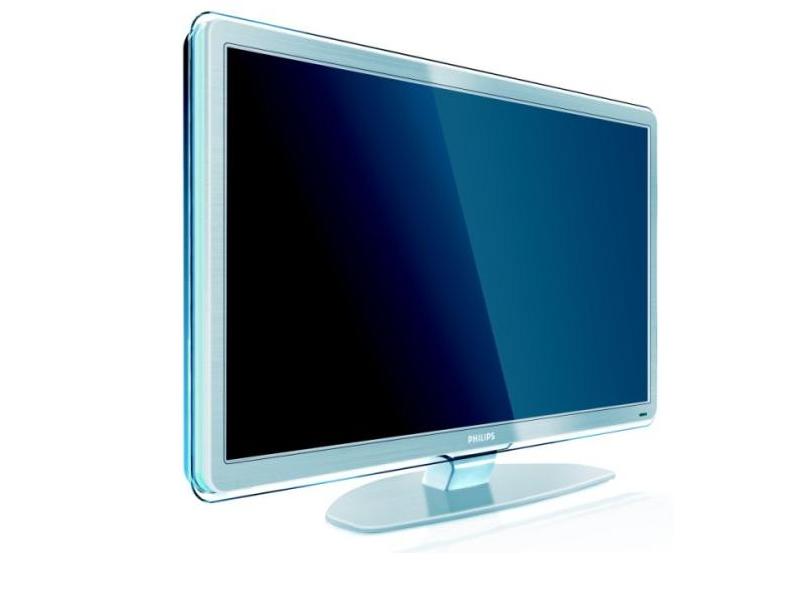TechRadar Verdict
Pros
- +
Amazing black levels
- +
Stunning contrast
- +
Motion is smooth as silk
Cons
- -
Expensive
Why you can trust TechRadar
It's a brave brand indeed which decides to demonstrate its latest LCD TV to journalists by running it side by side with one of Panasonic's latest plasma TVs.
Yet that's exactly what Philips did - with striking success - at this year's IFA show in Berlin. The TV involved in this high-brow showdown? The 42PFL9803H: Philips' first LCD to use LED backlighting.
LED backlights are a big deal for a number of picture quality reasons, all centring around the fact that LED TVs use an array of individually controllable backlight segments – 128 of them, in the 42PFL9803H's case – instead of the single, always-on fluorescent lamp used in normal LCD TVs.
This approach can massively improve that traditional LCD weakness of poor black levels, since it allows you to completely switch off the LED segments in dark areas of the picture, achieving near perfect blackness, at the same time that you can leave the LED segments in bright areas of the picture running at full brightness.
Amazing contrast
To put a number on just how important this simultaneous mixture of bright and dark elements really, Philips claims a vast contrast ratio for the 42PFL9803H of 2,000,000:1 – a figure twice as high as that claimed by Panasonic for its plasma TVs.
The 42PFL9803H's LED backlight system should also help it produce crisper, less blurry motion than you get with normal LCD technology, and a richer colour palette.
In celebration of the shift to a new picture technology, Philips has adorned the 42PFL9803H in a distinctive silvery, metallic finish in place of the glossy black used on Philips' other current high-end TVs.
And very fetching this new look is too, especially as it's joined by Philips' trademark transparent shroud design effect around the TV's outer edges, and a 'stereo' version of the brand's Ambilight system.
Highly specified
Not content to let LED backlighting and a fancy design be the only justification for the 42PFL9803H's extremely high £2,100 price, Philips has also equipped the TV with its top-level Perfect Pixel HD image processing engine, designed to improve fine detailing, contrast, motion handling, colour response and noise levels.
There's plenty going on with the set's connections too, as we find USB and Ethernet ports for multimedia file streaming alongside a healthy four HDMIs and pretty much everything else you could ask for from a TV these days.
By far the biggest justification for the 42PFL9803H's cost, though, comes from its picture quality. For in our humble opinion, it produces the finest picture quality we've yet seen from an LCD TV.
The main reason for this is its really jaw-dropping black level response
True blacks
Dark film scenes on the 42PFL9803 look absolutely pitch black, especially if you use the set's Dynamic Backlight function, giving them an authenticity and sense of scale that we've never seen before outside of Pioneer's premium KURO plasma TVs and, possibly, Samsung's new LED TV, the LE55A956. No straight LCD TV even comes close.
Also extravagantly good are the 42PFL9803H's colours, as they combine a blistering vibrancy with endless subtlety when it comes to colour blends and some outstandingly natural toning for 99 per cent of the time.
Philips' Perfect Pixel HD processing works its customary magic on fine detail levels, meanwhile, making standard definition pictures look something akin to HD, and HD pictures look a notch crisper and more textured than those of the vast majority of rival TVs.
It does no harm at all to the 42PFL9803H's sharpness that its LED backlight system also seems to deliver considerably less motion blur than you get with normal LCD TVs.
Tricky settings
There are really only two concerns with the 42PFL9803H's sensational performance efforts. First, just every now and then skin tones look a touch green around the gills. And second, if you want to continually see the 42PFL9803H's pictures at their A+ best, you have to take extreme care with the TV's reams of picture settings if you don't want to mess things up.
For instance, while HD Natural Motion works well with most films, it can cause distracting processing glitches with sport. Also, while the sharpness-boosting circuit can work well with good HD sources, it can make any less pristine sources look rather gritty and unnatural.
These are just two examples of numerous situations where you have to adjust specific elements of the TV's processing in order to keep pictures looking their best.
The 42PFL9803H isn't an easy TV to live with, then. And nor is it very affordable by the standards of today's cut-throat market place.
But then given how ground-breakingly sensational its picture quality is, doesn't it earn the right to be a little 'high maintenance'?!
John has been writing about home entertainment technology for more than two decades - an especially impressive feat considering he still claims to only be 35 years old (yeah, right). In that time he’s reviewed hundreds if not thousands of TVs, projectors and speakers, and spent frankly far too long sitting by himself in a dark room.

